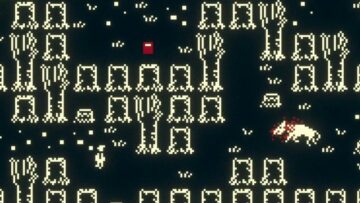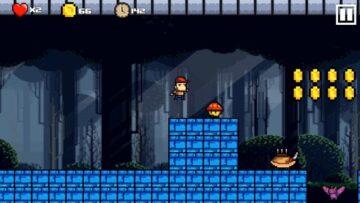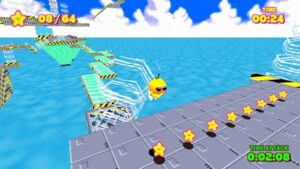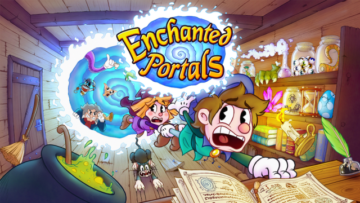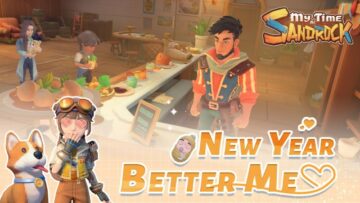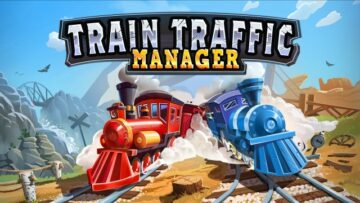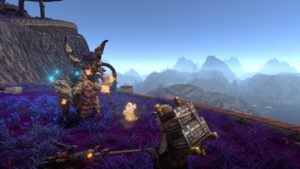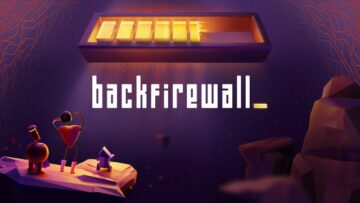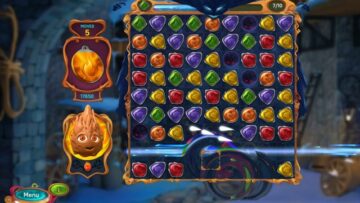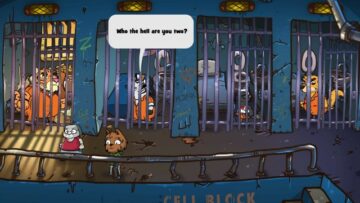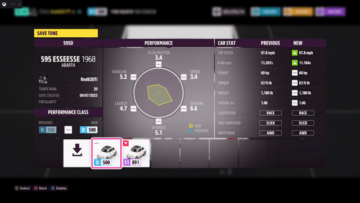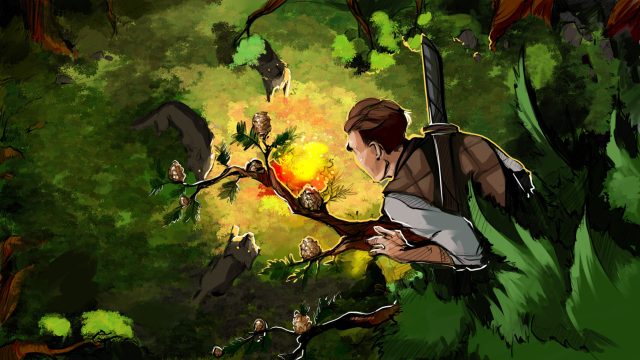
Welcome to Swordbreaker: Origins! If you are new to Choose Your Own Adventures, go to paragraph 2. If you know about Choose Your Own Adventures, but are new to Swordbreaker, go to paragraph 3. If you are a fan of Swordbreaker and have played the first game, go to paragraph 4. And if you would like to just skip to the final verdict, go to paragraph 13.
We don’t see Choose Your Own Adventure books as often as we used to. These were books that started much like the first paragraph of the review. You would be handed a situation with multiple choices, and your decision – from stealing cheese to fighting manticores – would send you zipping to various pages of the book to find out the consequences. You can blame video gaming for their demise: there’s not much call for flipping to pages when you can get much the same result delivered automatically by an RPG.
Ah, the Choose Your Own Adventure book. We’ve got fond memories of sitting on the sofa with a thumb in every page, completely fabricating our Skill and Stamina scores so that we had a chance against the Warlock of Firetop Mountain. We’d hazard a guess that these books were our first RPG experiences, so they slot into a warm, cosy nook in our heart. Swordbreaker: Origins is created by writers and designers with very much the same feelings. They want to bring that late ‘80s, early ‘90s experience to the Xbox, just without the cheating and flipping back pages when you die.
Swordbreaker: Origins is not the first in the Swordbreaker series. Back in 2020, we were treated to Swordbreaker The Game; a more traditional adventure through a dungeon. But you won’t need to have played that Swordbreaker to get your kicks from Swordbreaker: Origins: this is a prequel that allows you to take off in a completely different, wayward direction to the opening of Swordbreaker, to the point that their narratives no longer line up. There’s little attempt to join up the two games – unless you determine that one particular path through the game is canonical – so you can, and probably should, play this one first. It’s magnitudes more sprawling, for a start.
Swordbreaker: Origins is true to its title and starts from the beginnings of its main character. There’s a short preamble where you make a couple of decisions as a child, before you make the first – and probably most fundamental – branching choice: do you get conscripted into the Dorgan army or go AWOL?
Gameplay takes the form of short text segments with a painted backdrop as an indication of what you are doing and where. Then you are left with a choice. Do you camp near to a lake? Do you chat to some motley looking men, or do you immediately fight? Do you untie a man you find by the side of the road? These are the kinds of decisions that you will make throughout Swordbreaker: Origins.
We kid you not, but roughly one-third of all choices lead to death. Dorgan clearly has a low life expectancy, as even the most prosaic choice can leave you dead. Hilariously, it’s possible to die immediately after leaving your mama on your journey, simply by lying down on the ground. We can only imagine your poor mama’s face.
That sounds like some horrible Dragon’s Lair-style unfairness, but it’s not all that bad, really. For one, Swordbreaker has three lives, and you can quickly rewind to the moment before the choice if you have lives left. There are no dead-ends in Swordbreaker: Origins, so there’s always an escape route. And death is part of the experience; it’s thoroughly expected. You will be building a mental map of the death-spots in Swordbreaker: Origins, as well as an actual, physical map. When you die, you can see a fantastic visual recreation of every choice and death that you have experienced in Swordbreaker: Origins, and it’s satisfying to watch your percentage completion tick up.
We have died to harpies, yetis, dragons, vampires, elves, sticks left in the road, ghouls, bandits, headless horsemen and the Loch Ness monster. And we’re cool with it. What we are less cool with, however, is the speed of getting back to where we were. Swordbreaker: Origins desperately needs something, anything, to fill this void. You can’t save your position, restart from a previous position, or skip through earlier choices quickly. If you want to return to a previous bookmark, you have to do it manually, slowly, and Swordbreaker needs to find a solution here. We spent probably a half of our playtime in Swordbreaker: Origins stepping into previous footprints, simply to get back to where we were.
It’s a good time to mention that Swordbreaker: Origins is rough. You could go so far to say that it’s actually not very good at all, and you’d have a point. We’d have to nod sagely. Take all the component parts and they’re individually open to criticism: there’s so much art in the game that no individual piece of artwork looks good. The designer and developer is also the writer, and it shows: the quality of the text is far from professional, and the plot is just a sequence of things that happen, rather than anything cohesive. We hope that they get someone in to do the word stuff next time. The same designer loves a film reference too, shoehorning them in with about as much subtlety as Sauron on a Quidditch broomstick. You will meet – and we kid you not – an alien fighting a predator, Obi-Wan and Anakin taking a stroll, and the Fellowship of the Ring sharing a pint. It doesn’t hold a candle to Steve Jackson’s Sorcery!: not even a matchstick.
Which makes it all the more confusing – particularly to us – that we enjoyed Swordbreaker: Origins as much as we did. Because, by rights, it should be utter, whiffy rubbish. But it’s better than the sum of its parts through a magnetic pull. We felt various compulsions: one to fill the game map, another to find all endings, and a continuous, nagging determination to see what happens if we pick certain options. What happens when we fight the Amazonian woman, rather than save her?
Because Swordbreaker: Origins greatest achievement is its complexity. Not only are there thousands of different choices here (a third leading to death, natch), but the locations are so interconnected and sprawling that it’s almost as if it’s explorable as a 3D space. Picking up an item on one path, then bringing it to another path, only to find that the item unlocks new options that weren’t there before, delivers a special kind of glee.
Through sheer force of enthusiasm, Swordbreaker: Origins smooshes all its half-baked elements together and somehow, miraculously, creates something that we find hard to put down. Blame that node map: we have a borderline obsessive need to find every death, every choice, that is represented on it. Wait, what happens if you bring the freeze spell to the lake?
- SEO Powered Content & PR Distribution. Get Amplified Today.
- PlatoAiStream. Web3 Data Intelligence. Knowledge Amplified. Access Here.
- Minting the Future w Adryenn Ashley. Access Here.
- Source: https://www.thexboxhub.com/swordbreaker-origins-review/
- 1
- 13
- 2020
- 3d
- a
- About
- Adventure
- after
- Against
- AI
- alien
- All
- also
- always
- an
- and
- Another
- Anything
- ARE
- Army
- Art
- artwork
- as
- At
- automatically
- back
- backdrop
- bad
- BE
- because
- before
- Better
- book
- Books
- bring
- bringing
- Building
- but
- by
- call
- Camp
- CAN
- certain
- chance
- cheating
- child
- choice
- choices
- choose
- choose your own adventure
- clearly
- complexity
- component
- confusing
- consequences
- content
- continuous
- could
- Couple
- created
- creates
- criticism
- dead
- death
- decision
- decisions
- delivered
- designer
- designers
- determine
- Developer
- DID
- died
- different
- direction
- do
- doing
- down
- earlier
- Early
- elements
- end
- enjoyed
- enthusiasm
- escape
- even
- Every
- experience
- experienced
- Experiences
- Face
- far
- fight
- Fighting
- Film
- Final
- find
- First
- For
- force
- form
- Freeze
- from
- fundamental
- game
- Games
- Gaming
- Get
- getting
- go
- good
- greatest
- Ground
- had
- half
- happens
- Hard
- has
- Have
- heart
- her
- here
- hold
- hope
- however
- HTTPS
- if
- imagine
- immediately
- in
- indication
- individual
- interconnected
- into
- Is
- IT
- ITS
- join
- journey
- jpg
- just
- kind
- know
- late
- lead
- leading
- Life
- like
- Line
- Little
- lives
- locations
- longer
- looking
- looks
- Low
- main
- make
- MAKES
- man
- map
- meet
- Men
- moment
- more
- most
- much
- multiple
- narratives
- Near
- need
- needs
- New
- Next
- no
- node
- not
- obsessive
- of
- off
- often
- on
- One
- only
- open
- opening
- Options
- or
- our
- out
- own
- page
- part
- particular
- particularly
- path
- percentage
- physical
- pick
- picking
- plato
- plato data intelligence
- platodata
- platogaming
- play
- Point
- poor
- position
- possible
- previous
- probably
- professional
- put
- quality
- quickly
- rather
- really
- result
- return
- review
- Rewind
- rights
- Ring
- road
- roughly
- Route
- RPG
- same
- satisfying
- save
- say
- see
- segments
- send
- Series
- sharing
- Short
- should
- side
- Simply
- Sitting
- situation
- skill
- slot
- So
- so Far
- solution
- some
- something
- Space
- special
- speed
- stamina
- start
- started
- Take
- takes
- taking
- text
- than
- that
- The
- The Game
- their
- Them
- then
- there
- These
- they
- things
- third
- this
- thousands
- Through
- Throughout
- time
- Title
- to
- together
- too
- traditional
- two
- unlocks
- up
- us
- used
- various
- very
- Video
- video gaming
- wait
- want
- Watch
- we
- well
- were
- What
- when
- where
- will
- with
- without
- woman
- would
- writer
- xbox
- you
- your
- zephyrnet
